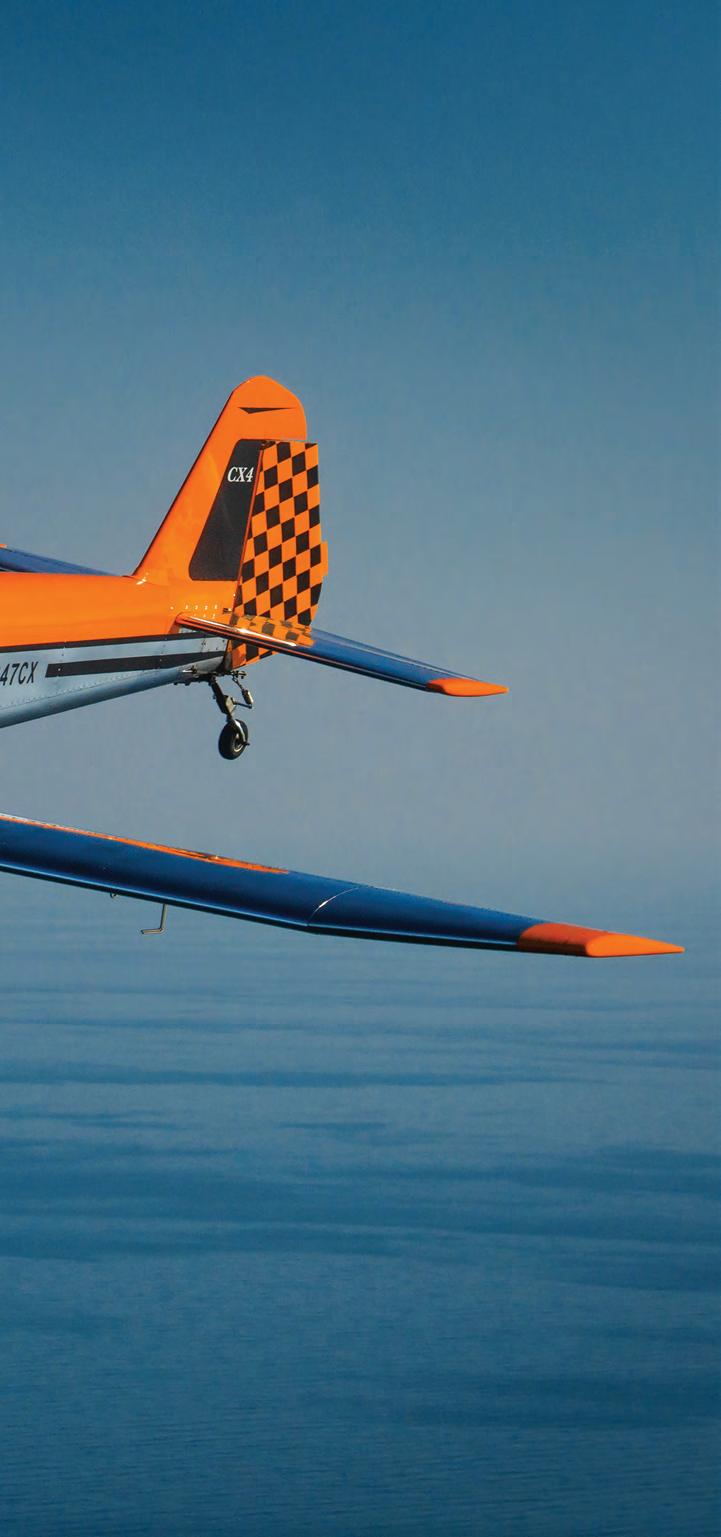
24 minute read
FLIGHT TEST
A budget build maybe, but as this American example shows, the CX-4 is a very attractive sports plane.
Photo: Sheldon Heatherington
It’s interesting how some designs of aircraft are one-offs, and others get built in numbers and become a popular type. There’s also a third class of even more successful machines that spawn a whole series of types following the same theme, or perhaps borrowing a few key features, and mutate to trigger another very different line of development. Jean Delemontez, with help from Eduard Joly, created the single seat Jodel D9 in 1948 which, over the years, led to a whole range of different Jodel models with up to five seats, all sharing the same structural concept and aerodynamics. This format was taken up by Pierre Robin for his line-up of more sophisticated wooden tourers, which are still being manufactured to this day. Marcel Jurca, taking another route, borrowed the Jodel’s structural arrangement in the 1960s and created the chunky Jurca
Tempete and two-seat Sirocco, from which he derived a whole line of replica WWII fighters including a full-size
Spitfire and FW 190. Dean Wilson’s Avid Flyer and Claude
Piel’s Emeraude are other examples of aircraft that inspired other types, which have had a lasting impact on the sport aviation scene, and just keep on giving…
Bucking the trend
This month we feature the Thatcher CX-4, a single-seater designed in the USA and made available in the form of plans and optionally, partial kits for amateur construction. Designed to use one of the several aero-conversions of the aircooled flat four VW engine, with its sliding bubble canopy, tailwheel undercarriage and cheek cowls, the CX-4 is of classical sports aircraft appearance. Most VW-powered single-seaters seem to have been designed with the ability to build them in a small space as a high priority. The average length of the typical European one-car garage meant inevitably that designs such as the Taylor Monoplane, Turbulent and Tipsy Nipper have short fuselages and narrow wing spans, giving them a shortcoupled appearance and an often undeserved reputation for ‘twitchiness’. The somewhat unique feature of the CX-4 is that it bucks this trend by using noticeably longer wings and fuselage than other single-seaters, yielding more generous moment arms and a layout that’s perhaps less intimidating to the low-time pilot.
Jeannie’s Teenie
Harking back to the introductory paragraph, given the good looks and generous proportions of the CX-4, it’s all the more surprising that it has as its distant ancestor an aeroplane that was slated in its day for its very small size and, frankly, extraordinarily ungainly appearance – the Jeannie’s Teenie. Designed to be ultra-simple to build, this tiny, controversial VW-powered low-wing, tricycle gear design was publicised in the 1960s through the Popular Mechanics magazine, the designer having been somewhat ostracised by the EAA top brass who, ‘reading between the lines’ had a low opinion of the Jeannie’s Teenie, and gave it very little coverage in their own Sport Aviation magazine.
Whether designer Cal Parker realised his first design was lacking in the aesthetics department, or whether a friend had a quiet word in his ear we’ll never know, but Parker went on to create the much more aesthetically pleasing Teenie Two version, and quite a few sets of drawings were sold. While neither model has ever been built in the UK, I remember seeing a Swiss Teenie Two that made it to the PFA Rally in the late 1970s, having flown all the way on single ignition.
What both designs majored on was simplicity of construction and using sheet aluminium, extruded aluminium angle and pulled (pop) rivets in an era when wood and ply were the material of choice for most single-seaters. Parker avoided much of the usual difficulty in building an aircraft in sheet aluminium by notching all the flanges on curved components (mainly the wing and tail ribs, and the fuselage bulkheads) so that the flanges could be bent over as individual ‘tabs’ around a simple plywood former, thus avoiding the need for hardwood tooling or to shrink the flanges to absorb the surplus material. This meant that unlike previous EAA-favoured designs such as the Midget Mustang, no special metalworking skills were required to build Parker’s midget VW-powered designs. While this flanging technique was something of an anathema to the traditionalists because it destroyed the integrity of the flanges on the individual components, it seemed to work OK once riveted up into a structure. Other features that troubled the establishment probably included the unsprung nose leg and the flying control system that relied on small diameter aluminium tube pushrods running through sheaves, rather than a traditional arrangement of cables, pulleys and self-supporting large diameter pushrods of good ole’ 4130 steel. Very unusually, the first aircraft that followed on from Cal Parker’s designs was not a more powerful version, or a two seater, but an even smaller low-winger powered by half a VW engine – the crankcase and crankshaft being cut behind the front pair of cylinders to create an opposed twin of 900cc. The Windwagon was similarly tricycle undercarriage equipped, but unlike Parker’s designs, the fuselage was a slender round-sectioned affair made from two shallow sheet metal cones riveted back to back. This gave the Windwagon a purposeful, pleasing appearance.
Open cockpitted, like its predecessors, the Windwagon’s shallow fuselage put the pilot’s upper body into rather an exposed position in the airflow and, particularly with its small wheels and without the benefit of any springing in the noseleg, couldn’t help but create doubts about the pilot’s vulnerability in any sort of turn-over accident. Nevertheless, weighing just 270lb empty, the Windwagon showed that half a VW could fly a full grown man at speeds apparently up to 100mph which, coming at the time of the Gulf oil crisis of the late 1970s, made quite an impression. A later derivative of the Windwagon, Morry Hummel’s Hummelbird, expanded the options by introducing an enclosed cockpit, shoulder harness and tailwheel undercarriage. All used Cal Parker’s construction techniques, control system and simplified structure with pop-riveted aluminium sheet parts, many of which could be fashioned with tin snips, avoiding reliance on access to a guillotine or nibbler. In each design, the flat-wrap skins were shaped around tab-flanged ribs and bulkheads, and C section spars were made up by bolting and riveting off-the-shelf extruded angle sections onto the flat sheet webs, avoiding the need for a long folder.
One example of the Windwagon has been built and
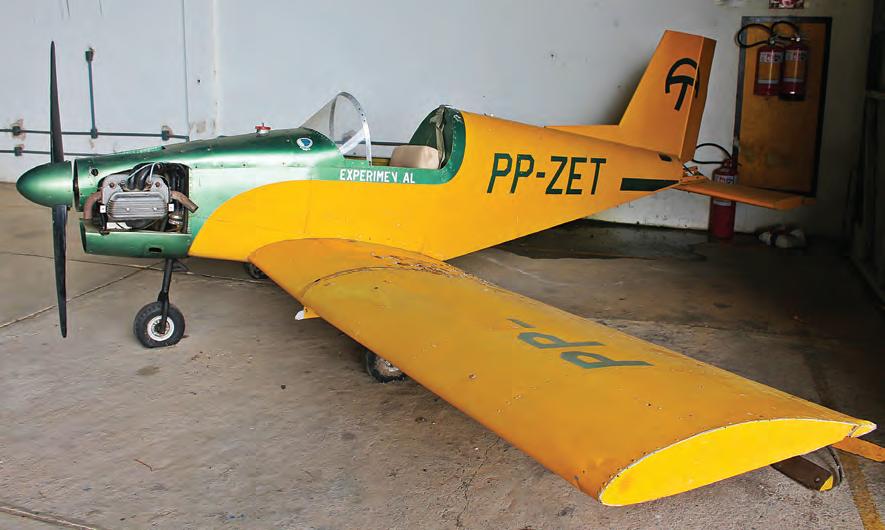
Left The Parker Teenie Two was the ‘refined’ version of the Jeannie’s Teenie which used a ½ VW and spawned the simple flange and small diameter control rod construction techniques used in the Thatcher. Photo:
Wikipedia
flown in the UK, constructed by propeller maker and ace aircraft welder Allen Haseldine. Allen’s example includes many modifications and improvements, many of which were made as a result of load testing sample structures at his home in South Wales. Re-engined with a more powerful 40hp version of the ½ VW after its first flights, Allen’s machine is part-way through its flight test programme which is being undertaken from Shobdon.
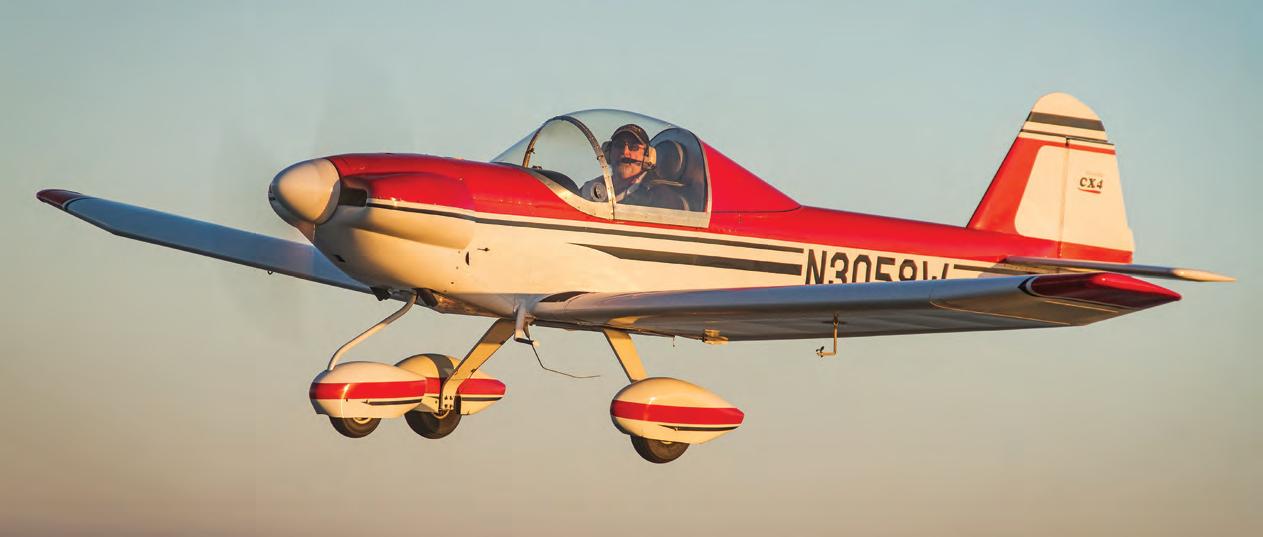
Designed for the 21st century pilot…
And so to the Thatcher CX-4, which takes the Teenie Two concept the other way with a larger airframe propelled by one of the bigger VW flat-four engines of typically two litres capacity or more, and a cockpit sized for a 21st century American. Like the Hummelbird, the CX-4 has an enclosed cockpit and tailwheel undercarriage, but the greater size of Florida-based Dave Thatcher’s design allows more classical proportions and curves that will appeal to fans of aircraft of the 1930s and 1940s era. The unusually high aspect ratio wings, set with substantial dihedral, long slender fuselage and large tail surfaces, make this a very stable-looking platform that will remind veteran r/c modellers of the old Astro Hog of the late 1950s. The CX-4 prototype first flew in 2004 and has been made available as a set of plans plus, for those wanting a head-start over genuine scratch builders, partial kits. More than 60 have now flown worldwide and six have been started in the UK to date, the only one to have been finished and flown so far being Peter Watson’s G-CISH. The CX-4 has two-piece mostly parallel-chord wings, each some 13ft long, which bolt to carry-through spars that pass through the lower cockpit area. The main spar of each wing is constructed of 1/8in thick extruded 6061-T6 angle, riveted and bolted to an 0.040in 6061-T6 web. The inboard parts of the spar have additional angles doubling up the spar caps in the high stress area. The wings are fully aluminium skinned throughout, there’s no fabric covering. There being no flaps, the narrow-chord ailerons, which are also of very simple folded aluminium sheet format, extend all the way from the root to the start of the outboard, tapered wing tips.
The fuselage is a sheet aluminium box with extruded aluminium alloy longerons and a minimum number of frames and sports a curved upper turtledeck and natty headrest, both cleverly fashioned from flat-wrap sheep alloy. The main undercarriage is a one-piece aluminium alloy spring cantilever unit, taken from a Sonerai, which simply bolts to the bottom of the fuselage. Fuel is contained in a tank located inside the forward turtledeck, Above The optional tricycle undercarriage suits the aircraft admirably, giving it a ‘modern’ look and eradicating the taildragger jitters for trike trained pilots.
Photo: Sheldon Heatherington
above the pilot’s knees. The tail surfaces are of similar construction to the wings but of very simplified form with a minimum of ribs.
Peter Watson’s example was started in Yorkshire in 2008 by a Mr D Hall, the airframe being largely built under the supervision of late lamented LAA inspector, Richard Yates. It passed to Peter as a part-built project in 2015, who then completed it with support from inspector David Beale. Peter found the final stages took longer than expected, as he explained when I went to take a look at the aeroplane in June of 2017 when it had been assembled at Fenland.
Reluctant Revmaster
The Revmaster R2100D engine had been reluctant to reach full power during ground runs, and the engine had needed a few tweaks to get it to run properly. Later this was resolved by changing the Stromburg carburettor to a Rev-flow unit. The Revmaster lacking a mechanical fuel pump, and with the gravity head from the fuselage mounted tank being not very great, fuel feed is via two electric pumps.
The twin ignition uses the single drive twin Bendix magneto, driven off the back of the engine via Revmaster’s own accessory case, which also houses an alternator and the ring gear for the electric starter. My checks on the aircraft as the ‘first of type’ in the UK revealed few problems – a doubler had to be added to reinforce an access hole introduced in the tail end of the fuselage. And improvements to the robustness of the joystick arrangement had already been introduced by the designer, which I was pleased to see had resulted in a much more convincing set-up than the Parker-inspired original version.
The completed empty weight of Peter’s example is 610lb, so the 850lb max gross weight allows a useful payload of 240lb. Peter’s aeroplane went on to have its first and subsequent few flights by Fenland CFI Steve Brown, which proved the aeroplane to have fundamentally benign handling characteristics. This was very much in line with expectations, based on the various magazine and online reviews of the type from overseas, and the general proportions and look of the machine. Peter then joined in with the flying to help build up time on the aircraft and continue with minor tweaks and adjustments. I was invited back to Fenland in February of 2019 to carry out the LAA’s ‘first of type’ evaluation flights that hopefully would lead to the issue of the initial full Permit to Fly.
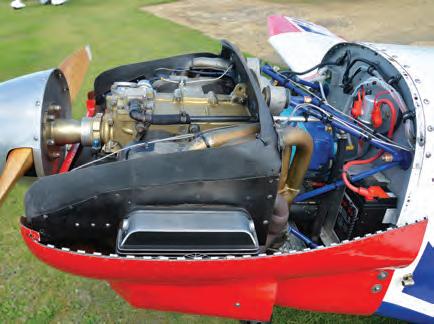
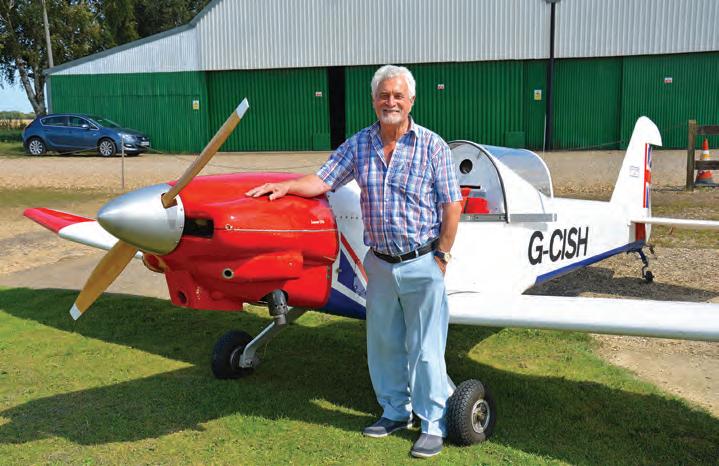

Above Owner Peter Watson with his Thatcher CX-4, it is the first completion in the UK. A couple of potential builders are looking at seeking approval for its two-seat sibling
Left middle The Revmaster 2100D has twin ignition, an alternator and electric starter which adds to the ease of living with a VW power plant. Neat cowling too.
Left bottom A nicely turned out cockpit which offers more room that the typical European VW powered singleseater.
Below The narrow chord ailerons extend from the root to the tapered wing tip and exhibit a lack of self-centring ability.
Looks right, flies right
When I saw the aircraft for the first time out on Fenland’s grass, all panelled up and ready to go, I was immediately struck by what a good-looking machine it has turned out to be. The cheek cowls and sliding bubble canopy, combined with round-tipped flying surfaces, echo the looks of classic Goodyear racers like the Shoestring and Denight Special, while the generous moment arms and wingspan don’t detract from the assurance that this is a sport aeroplane through and through. The saying goes, ‘if it looks right, it’ll fly right’ – and I was curious to find out if this was so with the Thatcher.
With its conservative proportions and low span-loading (i.e. the loaded weight divided by the wing span) I had no worries about its handling, and having flown behind many different VW engines, I felt quite confident in the powerplant installation which had already clocked up approaching 20 hours in the air. After explaining the function of the electrical system and the switches operating the two pumps, and the alternator, Peter’s briefing included stressing that there was quite a tendency for it to swing to the right on take-off, that it was difficult to get the speed back for the landing approach, and if you didn’t nail the approach speed and came over the hedge five knots fast, it would float for ages.
Plenty of room
Entry to the cockpit is by stepping onto the wing walkway on the right-hand wing root, sliding back the canopy on its twin runners and then stepping initially onto the seat. Once seated, the cockpit is generous in size when compared to the more familiar (in the UK) Turbulent or Taylor Mono, with no shortage of knee room, headroom or width.
The cockpit on Peter’s example includes some lightweight side panels, which hide some of the underlying structure, but nevertheless, as with RVs, Sonexes and most other aluminium alloy constructed sport aeroplanes, the interior is best described as functional. Nothing wrong with that, after all, many of us fly partly to escape being cosseted in the vinyl-clad, stylised and cushioned environment we’ve got used to in our cars, and enjoy a return to something more primitive and immediate.

While the control stick arrangement is conventional, the control system is unusual in that – shades of the Teenie Two heritage – the pitch control is connected to the elevator by a small diameter (about 5/8in) aluminium alloy push-pull tube which runs past the pilot’s right thigh, led through sheaves attached to the fuselage sides, and hidden behind a removable panel. The normal arrangement in a single-seater would be to run the elevator control rod or cables under the pilot’s seat, on the aircraft centreline, but this was perhaps impossible on the Teenie Two because of the seat having to be located as low as possible in the diminutive fuselage. There’s also a pilot-controllable elevator trim tab, mechanically operated by a push-pull cable connected to a simple lever on the cockpit’s right sidewall. Remembering that the Rev-flow carburettor has no float chamber, so you have to turn the fuel on just moments before starting the engine otherwise the carb would be dripping fuel, the Revmaster fired up easily enough at the first press of the button, and idled happily with that unique VW chunter. During the preliminary run-up, a mag check revealed a three-cylinder unevenness, revealing that a plug was definitely not firing – long faces all round. However, after stopping to check that all the HT leads were in place, it took only a few minutes’ ground running at high power to clear what was presumably an oiled-up or lead-fouled plug.
Off for a flight
The CX-4 was very easy to taxi, thanks to the steerable tailwheel, differential toe brakes and a good view from the cockpit in which, unusually for a taildragger, there was even a direct forward view over the nose. The curved windscreen arch provides a classically framed view of the world outside to please any red-blooded vintage buff. Chipmunk pilots would feel right at home here.
Nothing on the approach, so turning into wind, I pointed the shapely nose down Fenland’s main grass runway and opened up. The take-off roll showed that Peter had not been exaggerating when he warned that the right swinging tendency, the Thatcher needed a surprisingly heavy foot on the left rudder pedal to keep straight as the tail came up. Sitting quite low to the ground, as one does in the Thatcher, Above The elevator is aerodynamically balanced and features a mechanically operated trim tab. A downspring has been added to improve longitudinal static stability.

Below The long wings and fuselage are evident from this perspective. Peter has used a simple single curvature canopy rather than the blown canopy, which like a number of other components, is available from the US. the sensation of speed is perhaps exaggerated.
That’s maybe a feeble excuse for the fact that having accelerated to what felt like an appropriate airspeed to float off the ground, and with eyes very much focused outside of the cockpit after the short battle to keep straight, tentative back stick pressure showed that she wasn’t quite ready. I had to let her roll for another few seconds before she unstuck, but then, those small wheels free of the ragged grass, she seemed to pick up her heels and was immediately climbing away in a thoroughly lively fashion.
With the Revmaster humming away at full throttle and indicating 3,100rpm at 75kt, the rate of climb was just over 850ft/minute. Levelling off a few minutes later, she showed a cruise speed of 100kt at 2,800rpm, increasing to 110kt at full throttle. These figures are a little lower than the designer’s specifications suggest but perfectly adequate for this aeroplane’s mission – if you wanted to cross continents you’d probably have chosen something else to do it in anyway, and within the tightly packed variety and delights of the UK’s relatively modest area you can have a lot of fun with an aeroplane that can do 100mph while burning only a little over two gallons per hour. The Thatcher felt very comfortable in the air with responsive but not oversensitive controls, modest noise and vibration levels, and there were pleasingly few rattles or draughts from the rather basic sliding canopy.
Gentle stall
The Thatcher’s wing is of constant chord over most of its span, with short tapered tips. With this layout, and an innocuous-looking aerofoil section with a blunt leading edge, I wasn’t expecting any difficulties in the stall tests. And so it turned out to be, the CX-4 showing marked reluctance to drop a wing, generally settling into a mushing nose drop even when moving the stick all the way to the backstop, the ailerons remaining effective throughout.
Minimum observed airspeeds in a power-off stall from
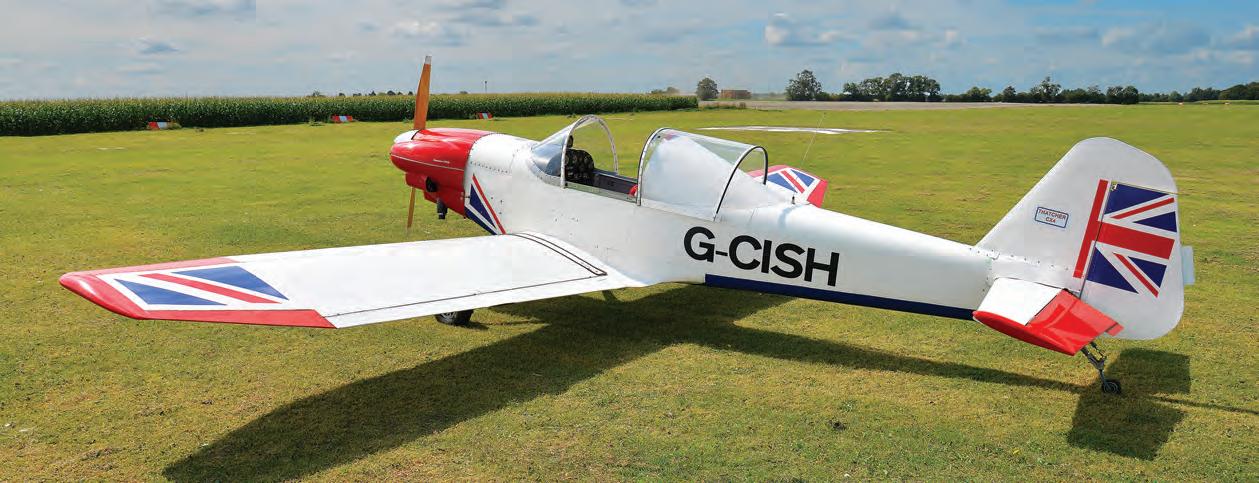
How does an elevator downspring work?
An elevator downspring is an arrangement with a spring connected to the elevator control system so as to tend to push the stick forward. This is counteracted in flight by an elevator trim tab which is slightly more angled in the ‘up trim’ direction (i.e. tab down) to compensate for the spring’s force. With this arrangement, when the aeroplane is flying at the speed it’s trimmed for, the two effects (tab and spring) exactly balance one another and the aircraft flies hands-off.
If the air speed decreases, for whatever reason, then the airflow over the tab reduces, so the aerodynamic force on the elevator generated by the tab reduces. The spring force now overcomes the diminished tab force and the stick tends to move forward, in so doing lowering the aircraft’s nose and raising the airspeed once more. Conversely, if the airspeed were to rise above the trim speed, the aerodynamic force on the elevator tab force would increase, the tab would then overcome the spring force and the stick would tend to move back, raising the aircraft’s nose. In this way, this simple addition to an aircraft’s control system can make a marked improvement in the apparent static longitudinal stability and reduce the pilot workload, the aeroplane feeling more ‘speed stable’. Interestingly though, although this ‘quick fix’ for a marginally stable aeroplane may allow it to pass the classical longitudinal static stability tests, because it responds to speed changes rather than angle of attack changes, it doesn’t provide the same instantaneous stabilising response as you’d get with a more generous tail volume. Below Peter runs up the CX-4 at Fenland. The low deck height is evident here and both take off and landing performance would be enhanced with a taller main gear. wings level were around 35kt and was preceded by a just discernible stick buffet, starting approximately three knots above the minimum observed speed. Looking at stability and control, the lateral stability provided by the marked dihedral angle was clearly positive in that one could both initiate and recover from turns induced by rudder alone. Checking the same parameter in the classical ‘recovery from a sideslip on release of the stick’ was to a degree hampered by a reluctance to self-centre on the part of the narrow-chord strip ailerons – ailerons like these require little operating force to deflect them but conversely, don’t provide strong self-centring forces to counteract the friction in the aileron control system. In reality, this is no hindrance at all to normal flying and the pilot won’t be aware of the characteristic, as most pilots would agree that the recovery from a sideslip is something to be carried out using positive stick movements rather than merely relaxing the pro-sideslip control inputs.
The aeroplane’s directional stability is positive, thanks to that long tail moment arm, and the behaviour of the rudder predictable throughout the rather narrow range of yaw angles that the aeroplane is capable of with up to full rudder deflection (at a suitable airspeed less than Va, of course). Because of the strong directional stability, and the slender fuselage not presenting much side area to generate a side-force, it’s not possible to hold the aeroplane ‘on its ear’ in a steep sideslip – as a means of losing height, for example. This was to become noticeable later…
Longitudinal static stability
The main surprise with Peter’s CX-4 was the finding that it was lacking in positive longitudinal static stability despite its long tail moment arm and generous-looking tail area. While it could be trimmed to fly straight and level happily enough, and be trimmed in the climb and the descent, it didn’t tend to return to the trim speed of its own accord after being disturbed by a manual intervention or by a gust. While this is again something that a pilot can usually compensate for without much thought, or may even be unaware of, it’s a characteristic that can lead to
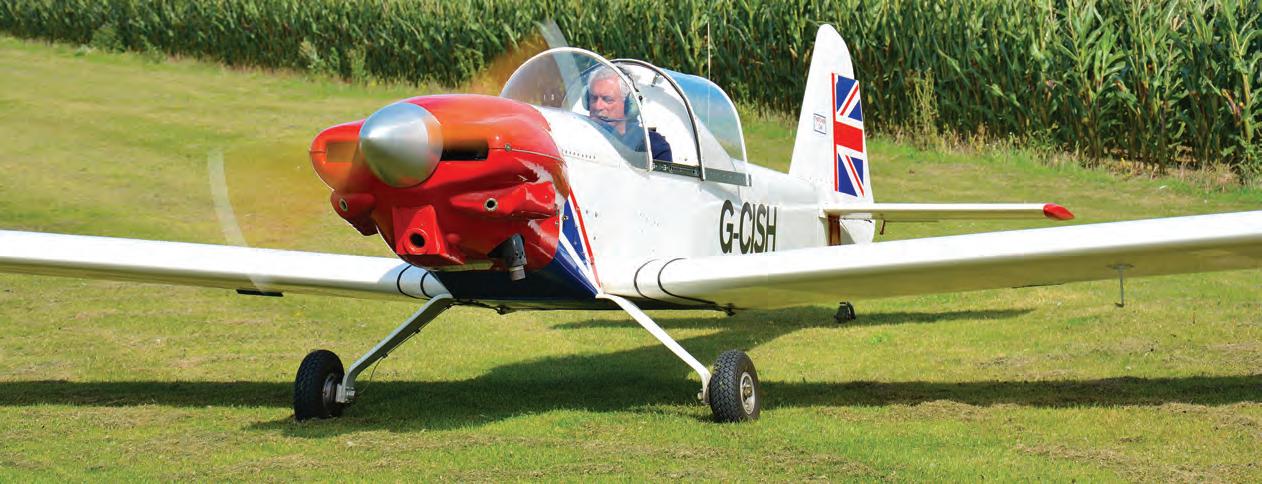
increased risk of an inadvertent stall or over speeding because of the absence of tactile ‘cues’ from changing airspeed – the aeroplane doesn’t ‘talk to you’ by having to be forced to maintain speeds away from the speed that it’s been trimmed for. When we first studied the aeroplane after finding this characteristic, we found that the elevator trim cable ‘outer’, which emerges from the fuselage to pass over the top of the tailplane and fix to the upper surface of the elevator, had been clamped to the elevator with a slight stretch in it so it was tending to support the weight of the elevator and prevent it moving to ‘full down’ under its own weight when the stick was free. Aircraft designers frequently include what’s called a ‘downspring’ in the elevator control system to increase the aircraft’s apparent longitudinal stability, and it looked as though Peter’s Thatcher might be suffering from the opposite effect of a virtual upspring created by the stretched trim tab cable. It turned out however, that this was something of a red herring, and re-rigging the tab cable to remove the ‘stretch’ effect made only a small improvement to the longitudinal characteristics. Over a couple of further trips to Fenland we therefore worked with Peter and David to introduce a positive down-spring system into the aircraft which provides enough apparent longitudinal static stability – in other words, speed-holding tendency – to be cleared as acceptable, without adversely affecting the trim range or upsetting any of the aeroplane’s other characteristics.
When it came time to land, and recalling Peter’s comments about the need to work to get the speed back for the approach, I planned a wide circuit to give myself a chance to look at this from the perspective of a low time pilot. With no flaps, a fairly clean high aspect ratio wing (at least, when compared to the ‘Hershey bar’ wing of an RV, say!) and the Revmaster having been set up with a fairly fast idle after one or two problems with it cutting out during the landing roll-out, the Thatcher was going to need a fairly flat approach. It did indeed need a fairly concerted effort to get the speed back to 60kt for the approach, which I was pleased to see, despite the absence of flaps to lower the nose, nevertheless allowed an excellent view of the runway. Fifty-five over the hedge, and conscious of the Thatcher’s rather flat ground attitude, I carried a little power right into the flare, so as to avoid touching down, tailwheel first. Putting the aeroplane into the three-point attitude remembered from the taxi-out resulted in a safe touchdown on all three together, albeit at what felt like a rather high ground speed. Without using the brakes, the Thatcher seemed to roll on a fair distance before slowing to taxying speed – its slender wings producing little retarding drag at the Thatcher’s rather flat ground angle.
So, how to sum up the Thatcher? It’s a great-looking, all metal sport aircraft that can be built from plans, to keep the initial cost low, or a basic kit, without needing complex metal-working equipment or, with its two-piece wings, a great deal of space. It performs as well or better than traditional European single-seaters, and it’s more generous dimensions, larger cockpit and better payload are more suited to the size of 21st century pilots – nowadays we tend to be a fair bit bigger in stature than the enthusiasts of the 1950s and 1960s, who came up with the competing Turbulent, Mono and Colibri. To compensate, it needs a big-bore VW to do its stuff, like Peter’s 2100cc unit – the designer quotes using a 1700cc unit – but I doubt it would be happy with a basic 1500 or 1600 like its European equivalents. Its conservative proportions make it suitable for a low-hours pilot with a bit of taildragger experience, as a first transition to the world of single-seaters, and particularly with the LAA’s down spring mod the handling is viceless by single-seater standards. The high aspect ratio wings mean there’s much less tendency to wash off the speed in a gliding turn than short span single seat designs, which is positive to safety particularly in an engine failure scenario. Conversely, the Thatcher does need careful energy management on the rather flat approach, but you soon get the knack of this. If it were mine, I’d be inclined (!) to fit a slightly taller main undercarriage to raise the deck angle, which would allow shorter take-offs and landings, at the slight expense of forward view when taxying – Peter has already fitted larger tyres for the same reason. But these are detail points. Dave Thatcher’s CX-4 is a little cracker of an aeroplane that can be built without breaking the bank, and we wish it every success. And finally, yes, there are not one but two equally attractive budget two-seat versions on the way – the tandem CX5 which has been around for a while, and a recently completed CX-7 side-by side prototype. Two LAA members have so far expressed themselves keen to take one through the LAA’s type acceptance process. Watch this space! Ed’s note. My thanks to Ben Carlson (www.thatcheraircraft.com) for arranging the pictures, and Sheldon Heatherington for permission to use them. ■
Bulldog Model 120 Thatcher CX-4
General characteristics
Crew: One Length: 18ft 3in (5.56m) Wingspan: 24ft (7.3m) Height: 4ft 8in (1.42m) Wing area: 84sq ft (7.8m2) Empty weight: 520lb (236kg) Gross weight: 850lb (386kg) Fuel capacity: 10.5 US gal (39.7L) Powerplant: 1 × Volkswagen 65hp (48 kW) Plans: https:// thatchercx4.com Performance
Cruise speed: 109kt (125mph, 201km/h) Stall speed: 35kt (40mph, 64km/h) Never exceed speed: 135kt (15 mph, 249km/h) Service ceiling: 10,000ft (3,000m) Rate of climb: 825ft/min (4.19m/s)










